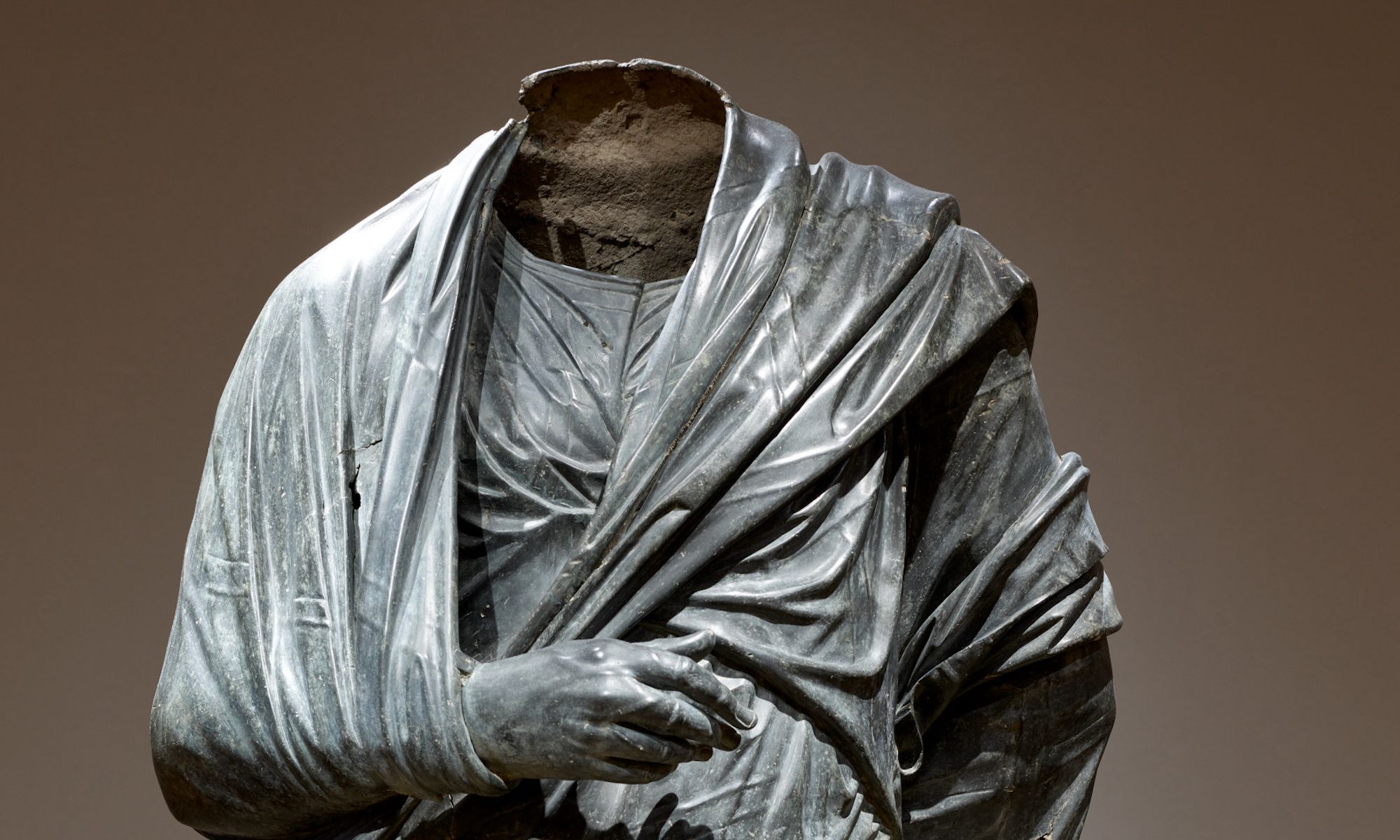This bronze statue was formerly described by the Cleveland Museum of Art as likely depicting Roman emperor Marcus Aurelius as a philosopher. Now it is described as Draped Male Figure, around 150BCE-200CE. Roman or possibly Greek Hellenistic. The Cleveland Museum of Art
The Cleveland Museum of Art (CMA) is suing the Manhattan District Attorney’s office in response to the prosecutor’s August seizure of a $20m classical bronze sculpture. The statue, depicting a headless man in a draped gown, is one of more than 4,600 antiquities the Manhattan DA has sought to repatriate since 2021. While the provenance of the statue has been long contested, renewed interest in recovering looted Turkish antiquities and increased scrutiny by officials in the US have rendered the work “seized in place”, as authorities determine its legality and subsequent fate.
In its lawsuit, the CMA maintains that it legally acquired the work, following its exhibition in several US museums throughout the 1960s and 70s. While the museum says that it “does not question that the New York District Attorney sometimes gets it right and returns true stolen items to foreign nations”, it contends that “this is not one of those times”.
The Turkish government first contacted the CMA requesting provenance information about the statue in 2009, before claiming in 2012 that it had in fact been looted. The repatriation request contends that the statue was taken from Bubon in Turkey, where local residents found and subsequently trafficked a large number of bronze statues in the 1960s. The only items left for archaeological study were 14 empty pedestals, all bearing the names of Roman emperors and empresses (as well as a single statue, which is now housed in a museum nearby).
Experts have noted the uncanny coincidence between the depletion of the Bubon site and arrival of four particularly impressive bronze statues in the Boston collection of Charles Lipson in 1967, but due to the headlessness of the figures, attribution has proved difficult. When the CMA bought the Draped Male Figure from Lipson in 1986, it was assumed to have come from Turkey.
The central claim tying the statue to Bubon is its prior identification as a likeness of Marcus Aurelius, a second-century Roman emperor whose name is inscribed on one of the empty pedestals investigated by local archaeologists. Prior to August, the CMA’s description of the work noted a rare inconsistency between the figure’s exceptional quality (characteristic of an “imperial portrait”) and non-Roman clothing consistent with depictions of Greek philosophers. This was resolved in an assumption that the subject of the statue was Marcus Aurelius, due to his dual status as Stoic philosopher and emperor, as well as his noted love of Greek culture.
In August, immediately preceding public allegations of illegal acquisition by the Manhattan DA, the CMA changed its description of the statue, claiming that the “identity of the figure represented remains unknown”. The museum additionally walked back its estimate that the statue was created near Bubon between AD180 and AD200, instead offering a wider attribution of between around 150BC and AD200 with “Roman or possibly Greek Hellenistic” heritage.
While other museums have recently restituted works with ties to Bubon, the CMA appears poised to dispute any association between its bronze and the archaeological site in the coming lawsuit with the Manhattan DA.

